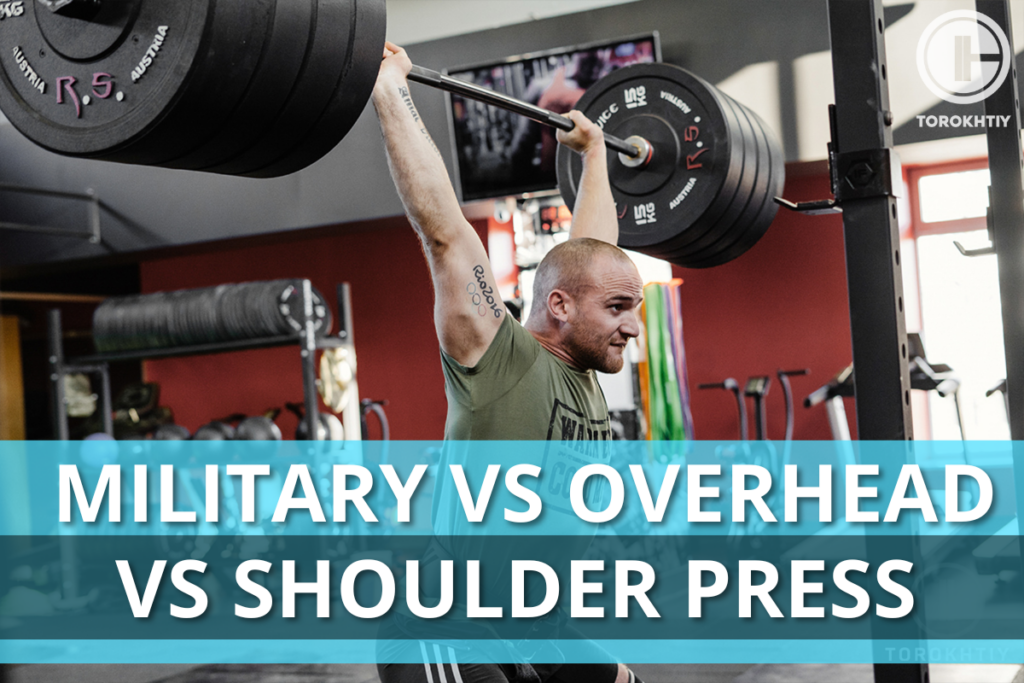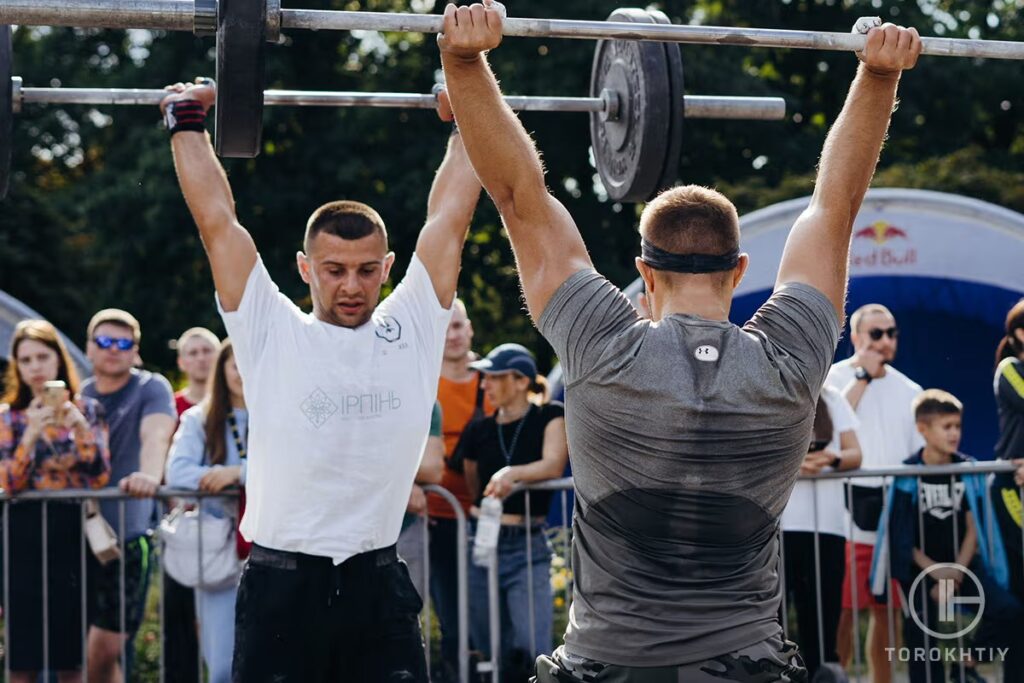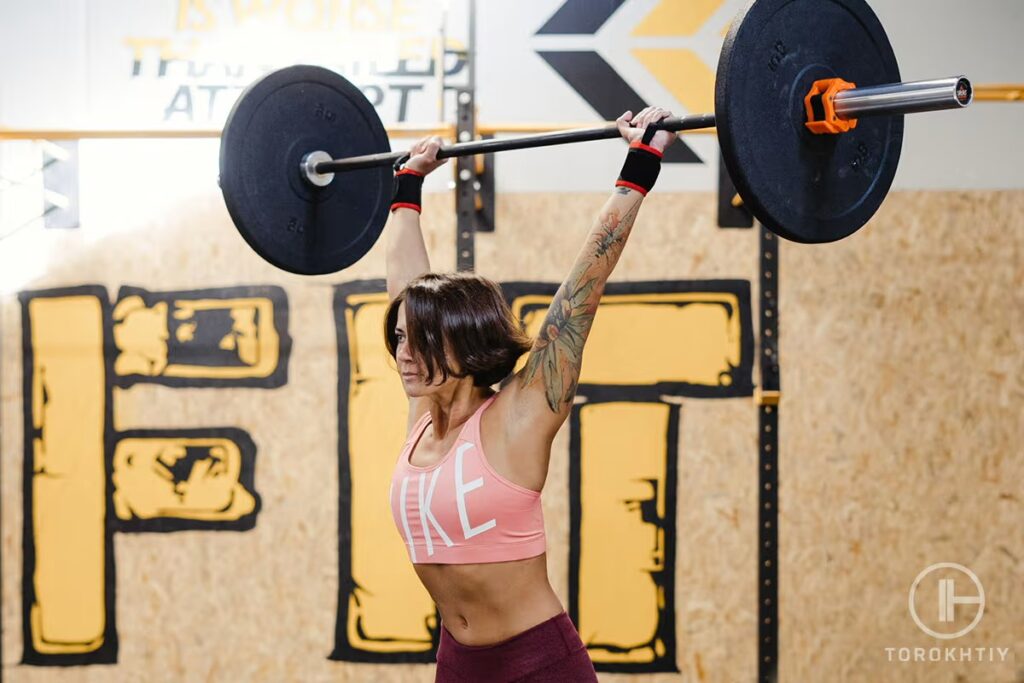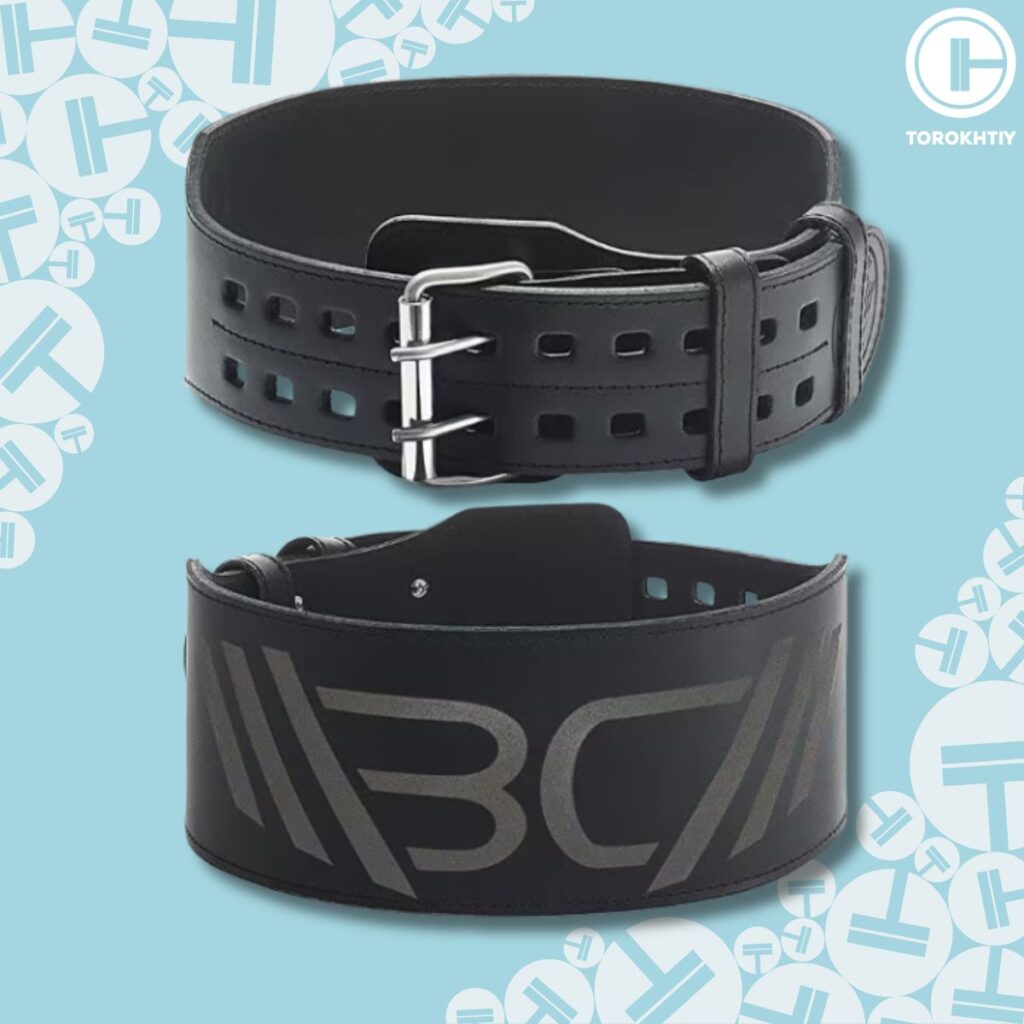Military vs Overhead vs Shoulder Press: Difference Explained
Author:
Unlock your full potential by engaging with our experts and community! Have questions about your fitness journey or looking for expert advice on weightlifting techniques? Don’t hesitate — leave a comment below and Ihor Shymechko will provide a personalized answer and insights to help you reach your goals.
Torokhtiy is reader-supported. Some links are affiliate links, and we may earn a commission at no extra cost to you. See our disclosure page for details.
The overhead press is considered to be the king of shoulder exercises because it requires you to use your entire body in order for you to complete the lift from start to finish. This article will cover everything you need to know about performing this lift properly.
What is the difference between a military vs overhead vs shoulder press? The answer is none. These three exercises basically refers to the same exercise. Hence, these terms are used interchangeably.

Overhead Press vs Shoulder Press vs Military Press
The overhead press vs military press vs shoulder press are all the same exercise. They work the same muscles and have the same benefits.
The military press has its roots in Asia where soldiers used heavy weights to build strength for combat during peacetime conditions; however, it became popularized by American soldiers after WWII as a way to improve strength while carrying heavy packs over long distances while training for war efforts overseas.
The overhead press in general is a great exercise for building strength in your core, shoulders, chest, and triceps. It’s also good for improving your posture and preventing injuries from repetitive motions such as typing or carrying heavy things around all day long.
It is an excellent exercise to increase strength and size in the shoulders. The overhead press also provides a good core workout and improves balance, coordination, flexibility, and posture. If you are looking for ways to get bigger shoulders while working out the rest of your body, then the overhead press may be just what you need.
Military Press/Overhead Press/Shoulder Press: How to Perform an Overhead Press?
1. Assume the starting position
Before you start your lift, make sure that you’re in the correct position. Stand up straight with your feet hip-width apart and keep your entire body rigid and engaged. Hold the barbell at the level just above your chest with palms facing forward, elbows bent, and shoulders down and back. Elbows should be slightly in front of the bar. The distance between your hands should be a bit wider than the width of your shoulders.
2. Prepare your mind
It’s not just about the press, it’s also about the mind. The same principle applies to overhead presses: imagine a straight line drawn for your elbows through the wrists and hands and all the way to the ceiling—this is the path that barbell should move along to. The goal is to keep the bar as close to your body’s vertical axis as possible.

3. Press along the imaginary path
The first step is to engage your core and ensure that your body is stable, then press up overhead. Keep your spine neutral, your legs extended, and your heels down. As you extend your elbows, imagine moving the bar along the imaginary path defined above. Make sure that you’re using your shoulders in pushing up into the bar. Once you’ve extended your elbows, hold for a second or two, return back down to starting position, and repeat.
This same technique can be applied when pressing dumbbells or kettlebells as well; they’re often pressed in almost identical ways but with different arm orientations depending on what variation you want to perform.
Military Press vs Overhead Press vs Shoulder Press: Progression
1. Start with a bar and progress to dumbbells and kettlebells
If you’re just starting to build up your pressing strength, it’s best to start with an easier variation of the movement which is by using the lightest bar. Between a dumbbell shoulder press vs military press, the latter is the better place to start.
Now to progress, you can attempt pressing a bar in a seated, tall-kneeling, or half-kneeling position. As you master these movements and feel confident about pressing them, you can move on to dumbbell or kettlebell presses.

2. Opt for light barbell weights initially
The first step to proper pressing is to start with a lighter barbell. You can even begin with just the bar, with no weights on it at all. If you lose your form and your back arches too much as you press, this means that the weight is too heavy for you—lose some weight off the bar until it’s comfortable for your body type and skill level. However, too little weight on the bar will not be effective at strengthening your shoulders or chest. So find your sweet spot!
3. Challenge yourself every week
In order to get the most out of your training, it’s important to challenge yourself. If you don’t know where to start, you can try this regime:
- Week 1: 5 sets of 5 reps
- Week 2: 5 sets of 6 reps
- Week 3: 5 sets of 7 reps
Then, increase the weights slowly but surely. The goal in each session is to be able to perform the movement with good form and steady breathing. With patience and consistency, you’ll find yourself lifting heavier in no time!

Military Press/Overhead Press/Shoulder Press: Common Mistakes
❌Incorrect grip
The grip on your barbell plays a huge role in the execution of the overhead press. If you do not have a proper grip, you may limit your lift and even injure yourself.
To properly execute the overhead press, your wrists should remain neutral at all times; if they begin to extend or move backward due to an overly pronated (or supinated) grip, this can cause pain in your forearms and wrists as well as limit lat recruitment when pressing overhead. It will also hinder power output on the lift because it prevents full arm extension at lockout.
To avoid these issues from happening, keep a neutral wrist alignment by positioning your hands just slightly wider than shoulder-width apart during each rep of an overhead press set—this ensures that you get maximal benefit out of each repetition without compromising the form or function involved in performing this lift correctly!
❌Insufficient brace
One of the most common mistakes made by overhead pressers is failing to brace properly. This is especially true when doing a standing overhead press because there’s no bench to support you. If you lose your brace, this can lead to injury because it puts compressive forces on your spine and causes it to bend backward.
To fix this problem, make sure that you’re using all three parts of your core—the ribs and abs pack tight together, creating an arch in the midsection. Your back should also be straight (or slightly arched), but not hyper-extended at any point of the lift; if so, then something has gone wrong with either your form or your biomechanics!
Follow us!

Free!
Get a 2-week Weightlifting Program as a bonus for the subscription to kickstart your training plan!

Free!
❌Incorrect bar path
To maximize the effectiveness of this exercise, you want to make sure your bar path is as straight up and down as possible. You don’t want it to travel forward or backward at all; the ideal position would be directly above your head.
If you’re not hitting this ideal position, you may not be recruiting the right muscles and could be limiting yourself in terms of strength gains. Taking videos of yourself doing overhead presses is a great way to see where you need to improve so that you can make adjustments to your form.

❌Incorrect head movement
In the overhead press, it’s difficult to press with a correct bar path without the right head movement. The key is to move your head backward as you press and then move it forward as you complete the lift.
A good head movement optimizes your press by providing an undisrupted bar path and a great mechanical advantage. If you’re struggling to get your technique right, try practicing with a bare bar or a PVC pipe until mastering this important aspect of overhead pressing becomes second nature.

Tips for Military Press/Overhead Press/Shoulder Press
1. Tighten your glutes
The standing overhead press is a whole-body exercise, so you should engage your lower body as well, especially your glutes. Weak glutes can predispose you to lower back injuries, so it’s important to keep them nice and tight for a strong core. The standing overhead press is an excellent way to strengthen your upper body while also working out the rest of it.
The best way to do this is by contracting and squeezing your glutes with each rep. This will give you a strong base that allows you to focus on pressing up with perfect form.
2. Engage your core
The first thing to keep in mind when performing the overhead press is to engage your core, which will help you avoid injury and increase stability. Engaging your core helps keep your body in proper alignment and prevents back pain and injury.
To engage your core, imagine someone is tickling you from the inside out. This will activate all of the muscles around your spine and allow you to lift more weight while also keeping a safe posture that’s not dangerous for you or others around you.
By engaging your abs before lifting any heavy weights, it will result in greater overall balance as well as stronger lifts once those weights start going up!
3. Elbows down and tucked in
One of the most common errors in the overhead press is allowing your elbows to flare outward. While this may seem like an efficient way to lift heavy weight, it can lead to shoulder injuries. An excessive amount of stress on your shoulders will take away from your power output and make it difficult for you to finish a set without injury.
To avoid injury, keep your elbows tucked in and down until just before lockout during each rep. This will help stabilize them so they stay in line with your forearms instead of moving back and forth during each rep.
4. Keep your wrists rigid
An important aspect of the overhead press is keeping your wrists tight and rigid. It’s easy to get focused on all of the other things you have to think about when you lift, but your wrist position also dictates your power output.
If you’re having trouble with overhead presses, keep your wrists tight and rigid instead of bending them back or forward. If this means taking some weight off the bar, do it! And if you find that bending your wrists doesn’t feel natural for some reason (or if they’re just weak), consider strengthening them first before moving on to heavier overhead presses.
Why Do We Need Weightlifting Belt for Military Press/Overhead Press/Shoulder Press?
The overhead press is one of the most effective exercises for developing a strong and stable core. However, it can be difficult to master because you need to stabilize your entire body while maintaining proper posture and breathing technique.
To increase your strength during this lift, you should use a weightlifting belt. This will improve core engagement, power generation, and overall stability during each rep of the exercise. By improving all three factors at once—and not just one or two—you’ll see better results in less time!
WARM BODY COLD MIND Leather Belt
One of my favorite belt to use is Warm Body Cold Mind Weightlifting Belt. It is a high-quality weightlifting belt that comes with 100% leather and features a unique design to provide the best support and comfort. This heavy-duty weightlifting belt provides maximum back protection, making it ideal for lifting heavy weights in the gym or at home.
FAQ
Is the military press harder than the overhead press?
Military press is not harder than overhead press for the reason that they are basically the same exercise. The same goes with military press vs shoulder press.
Is a military press the same as an overhead press?
Yes, the military press and overhead press are exercise terms that refer to the same exercise.
Why is shoulder press called military press?
It’s called the military press because it was first introduced by the military. The military needed a way to test the strength of its soldiers, and it is still used today as a reflection of one’s strength in the armed forces.
Conclusion
We hope this article has been helpful for you in understanding the overhead press is technically the same exercise as the military and shoulder press and how it can be used to improve your training. If you’re looking to improve your strength, try performing this lift.
Any questions? Suggestions? Let us know in the comment section below!
Also Read:
- Barbell Vs Dumbbell Shoulder Press
- Clusters Functional Fitness
- What Size Lifting Belt Should I Get
- Weighted Dips
- When To Start Using A Lifting Belt
- Best Weightlifting Belt For Functional Fitness
- Barbell Sumo Squat
References:
- How to Do the Dumbbell Military Press // Health Line: https://www.healthline.com/health/dumbbell-military-press
- The Overhead Press // Health Line: https://www.healthline.com/health/overhead-press-muscles#tips-on-how
- Photos made by Torokhtiy Media Team.
Why Trust Us?
With over 20 years in Olympic weightlifting, strength training, nutrition coaching, and general fitness our team does its best to provide the audience with ultimate support and meet the needs and requirements of advanced athletes and professional lifters, as well as people who strive to open new opportunities and develop their physical capabilities with us.
By trusting the recommendations of our certified experts in coaching, nutrition, and sports training programming, as well as scientific consultants, and physiotherapists, we provide you with thorough, well-considered, and scientifically proven content. All the information given in the articles concerning workout programming, separate exercises, and athletic performance, in general, is based on verified data.
The product testing process is described in more detail here.
Author: Ihor Shymechko
Pro Olympic Weightlifter, Coach
Best Results: Snatch – 208 kg,
C&J – 240 kg
Ihor has been a professional weightlifter since 1996, boasting over two decades of competition experience. His notable achievements include clinching the European Championship in 2009 and securing a silver medal in the 105kg division at the Senior World Championships in 2011. Ihor represented his country in the 2008, 2012, and 2016 Summer Olympics. After retiring from competitive weightlifting, he transitioned to coaching, leveraging his vast experience to guide athletes who now compete on both national and international stages.




Still have questions after reading our article? Unlock your full potential by engaging with our experts and community! Don’t hesitate — leave a comment below and Ihor Shymechko will provide a personalized answer and insights to help you reach your goals.